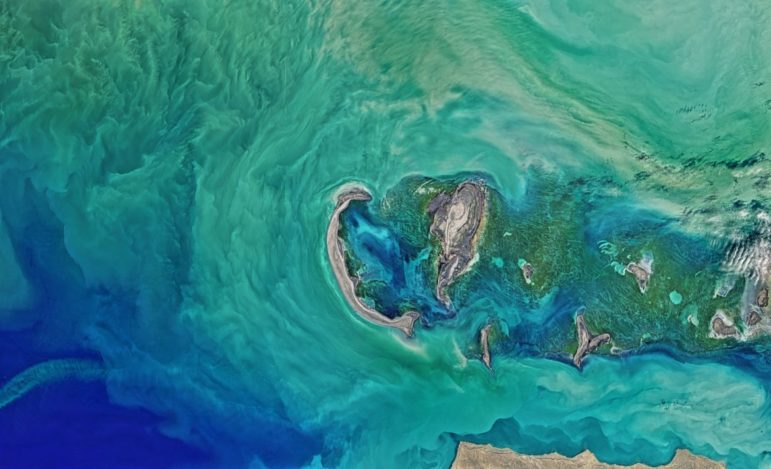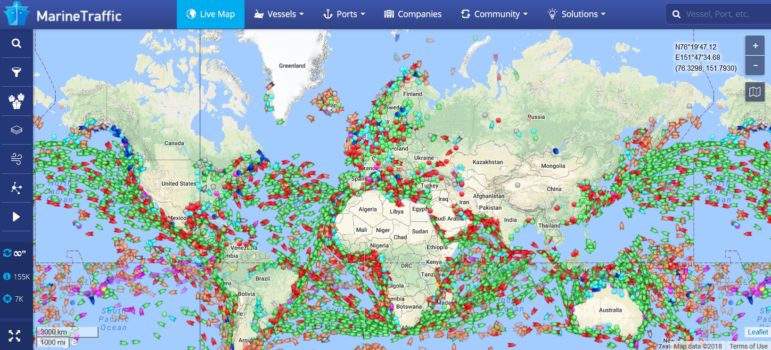

Tracking Ships at Sea
More than 90,000 commercial ships make up the world’s commercial fleet, their locations closely tracked and the resulting data available for free.
GIJN has compiled a comprehensive list of resources to track ships (including big yachts and fishing boats). We link to four dozen valuable sources of information.
At the 2023 Global Investigative Journalism Conference, we also held a panel on plane and ship tracking. A raft of new tools are helping journalists track shipping and aircraft around the world. The numerous ways to track ships and planes open a whole new range of stories for journalists to investigate, from following billionaires’ private planes to uncovering the details of refugee boats capsizing. You can watch the video below:
It’s possible to learn where ships are, where they came from and where they are going.
Also, you can research ship owners (although that can be difficult), and get information about the ships, including pictures, and their crews. Tools exist to follow the movements of cargo containers. And more.
Maritime OSINT: In Detail, a 2022 post in Hacktoria by Dipti Yadav, is a good introduction, especially on tracking containers, and has some advanced advice, too.
For tracking shipping containers, customs codes, and bills of lading, see a presentation by Columbia University journalism professor Giannina Segnini.at GIJC19. Also read Learning Custom Languages to Track Shipments, Segnini’s contribution at IJAsia18.
“Maritime enthusiast” Rae Baker, a US-based OSINT expert who tweets as @wondersmith_rae, has written a number of idea-filled posts:
- 6 Tips for Investigating Maritime Vessels
- Maritime OSINT: Port Analysis
- OSINT on the Ocean: Maritime Intelligence Gathering Techniques
- How to Install OpenCPN on Your AIS Raspberry Pi for Maritime Research
Baker presented on maritime investigations in a 2022 You Tube seminar. Also see an interview with Baker on the topic.
Another video tutorial, Maritime OSINT Tutorial: Track Vessels in the Deep Sea, by cyber security researcher Irfan Shakeel looks at how to probe communications from vessels to owners.
To learn how ships are tracked through the use of the automatic identification system (AIS), read a description by Marine Traffic. AIS signals from some 180,000 vessels are monitored daily via land-based stations and satellites.
While much information can be obtained for free, subscriptions are often required to acquire more sophisticated material, such as real-time or historic information. The options range, as do the prices, but in very general terms, a subscription may run to a few hundred dollars a month. Some of the vendors are open to working with journalists, to provide images and more, noted in GIJN’s shipping spreadsheet.
Also potentially useful are sites where maritime workers swap information and look for jobs.
Search “port webcams” to see the many seaports with live cameras.
While this GIJN spreadsheet focuses on maritime specialized sites, but don’t overlook using general search engine tools.
We continue to update this resource and welcome suggestions.
Just for the wow factor, click to see this world map that show the magnitude of ocean shipping.
Tracking Data Used in Variety of Ways
Ship-tracking data has been critical for reporting on collisions at sea, both on a spot news basis and in investigative reporting. For example, here’s a look-back by The New York Times at a 2017 crash between a US Navy ship and a commercial ship near Singapore. MarineTraffic supplied data for the story.
Investigative reporters have found many other uses for shipping data, for example:
- To expose the movement of North Korean vessels. North Korea’s mystery ship: The curious case of the Hao Fan 6, by Joshua Berlinger for CNN. And North Korean fuel ships dodge sanctions on the way back from Russia, by Polina Nikolskaya for Reuters.
- To examine what might be going on when ships turn off their transponders. Security fears over cargo ships ‘going dark’ near terror zones, by Fiona Hamilton for The Times of London. The NGO Oceana investigated the same issue for its report, Avoiding Detection: Global Case Studies of Possible AIS Avoidance.
- To research slavery in the Thai seafood industry. In PBS interview, AP reporter Martha Mendoza describes how she and colleagues “videoed and documented the seafood being loaded on to one refrigerated cargo ship.” She continued: “That boat had a satellite tracker in it, and that tracker was pinging to a locator, and we watched the boat via the Internet. And for two weeks, we tracked it into port. When it arrived in port, AP met it and watched the seafood being unloaded into pickup trucks, and followed those trucks to factories. “









